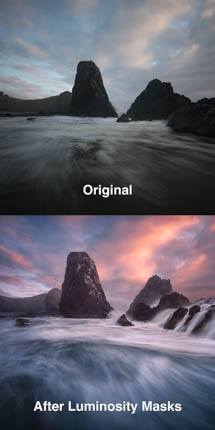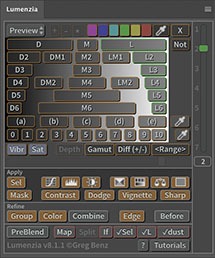I previously posted a tutorial on the problem of false banding in Photoshop. This can cause your image to look severely degraded when zoomed out (to less 64%). Typically, this false “banding” would show up as uneven changes across the sky in a photograph. It’s not real, just a quirk of historical performance optimizations in Photoshop. When you view a layered image in Photoshop, you’re typically just viewing a preview of what the flattened image would look like. There’s a very good reason for this. To continuously do all the calculations for layers, blend modes, layer masks, BlendIf, opacity, etc on every pixel would cause very slow performance and reduce battery life for laptops. The engineers at Adobe have devised all sorts of tricks to help make this preview look nearly identical to what the flattened image would be. This preview is so good in fact that when we see issues like false banding, we assume the problem must be real. But in this case the problem is that you’re viewing an 8-bit preview instead of your 16-bit image.
Now that computer performance has improved so much over the years, Adobe has released a solution that eliminates the issue with a more accurate 16-bit preview. The underlying issue is that certain levels of cache in Photoshop (those affecting the view when you are not zoomed in close) were generated using 8-bit cache data. This tends to become a problem when using adjustment layers with significant adjustments on gradients (such as the sky). With Photoshop v23.5, we can now tell Photoshop to use 16-bit previews all the time, which eliminates this false banding. Just go to PS prefs / Technology Previews, check “Precise Previews for 16-bit documents“, and restart Photoshop. As a Tech Preview, this option will likely just become the default behavior in the future. So if you’re using a future version of PS (newer than v23.5) and don’t see the option, you’re already getting the benefit.
This change also has another great benefit, more accurate histograms. The histogram is based on the same data used for the preview (unless you click the warning triangle or circular arrow by the histogram to refresh it based on the current state of the document). With the old 8-bit previews, the histogram was frequently misleading and would frequently show spikes. But with the 16-bit tech preview enabled, your histogram should be very accurate and smooth. I don’t see any need to refresh the histogram anymore (unless you’re using statistics and want them to be exact rather than just very close to the exact value).
I have seen no tradeoffs with this tech preview enabled. Performance is excellent and I highly recommend you enable it.
If you’ve enabled this setting and still see banding or spiky histograms, it’s real (you can flatten the image or zoom to 100% to confirm). The most likely cause of this would be working with 8-bit data (such as stock images or if you’ve opened your image in 8-bit mode).

